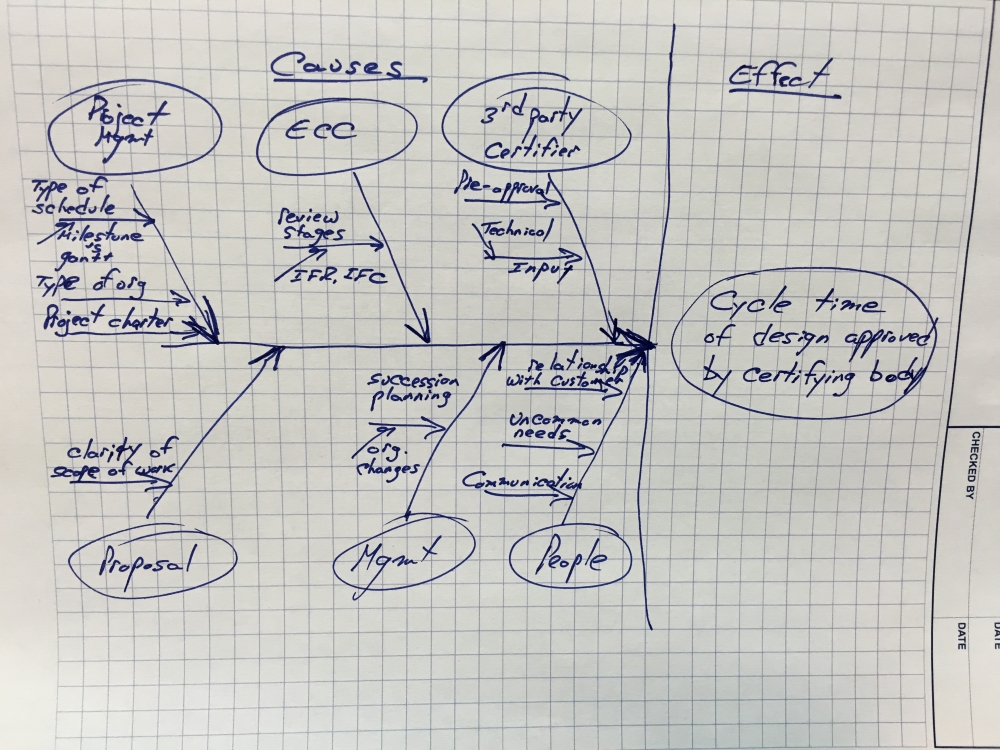Flawless Execution of Safety Retrofits Using Lean Six Sigma (LSS)
Summary
Successful safety retrofit projects require engineering processes flexible enough to incorporate changes to promote the flawlessness of their execution. In these types of projects, timing is everything. The cycle times between design and contractor selection continues to get compressed as budgets only get approved based on cash flows orchestrated by client Finance departments. Lean Six Sigma (LSS) methodology provides a useful roadmap leading to successful execution of these types of projects.
Why are these projects different?
Retrofits are an important part of the engineering marketplace. As infrastructure in the plants ages beyond 20 years, important upgrades are required to keep the critical infrastructure in tip top shape for the next economic upswing, maintainable and capable of meeting the latest safety practices as regulations mandate. The nature of these projects also makes them the most challenging technically. These projects are different operationally as they almost always require a major shutdown to be deployed making timing extremely crucial when taking them on. They also involve a regulating body. Missing the schedule could mean delaying the install of the retrofit 18-24 months and, in worst case scenarios, cause unplanned downtime for clients due to obsolescence of components! Firms in this business have to be lean and nimble even with established engineering control processes in place, hence the suitability for Lean Six Sigma methodology.
Enter value mapping and waste elimination
Besides the list of documentation to be produced in the design of a safety retrofit, there are two (2) very important pieces of information that must be determined with certainty:
1) The Code(s) to follow;
2) The Certifier’s expectations for approving your design before Issuing for Construction (IFC).
Determining the applicable Codes comes with the territory and should be known by the engineering consultant right from the Proposal stage. Planning for Certifier expectations with the goal of obtaining approval at the IFC and as-built stages is key to a successful project. This is where mapping your value stream and performing cause-and-effect analysis comes in to reduce design/approval cycle time and waste (especially wasted time) in the engineering process. If the contents of the following chart look familiar, please continue to read on.

Where do we go from here?
Use the Six Sigma DMAIC method to Define, Measure, Analyze, Implement & Control. Our roadmap (a less generic DMAIC, if you like) boils down to this:
Document it. Don’t defer fixing a cycle time challenge. Plan to fix it;
Mitigate risk by developing a project execution plan (PEP) and maintain a schedule;
Ask for a value map and perform cause-and-effect to determine causes of wasted time and changes to process. Seek some help to do this;
Inform all leads of solution(s). Inform the teams. Be specific and;
Consider integration of solutions into relevant IT processes.
What was learned?
Rules of Credit (I.e. 30%, 60%, 90% stages) applied to engineering and construction deliverables based on properly established progress criteria improves execution time by up to 15%. Implementing procedures using LSS methodology can be an effective way of putting procedures in place to consistently benefit from this improvement.
Next step
Driving consistency will best be served by integrating the improvements into the IT applications that support the Project Management processes. This should follow your business’ documented IT strategy and framework.
Thanks,
Peter